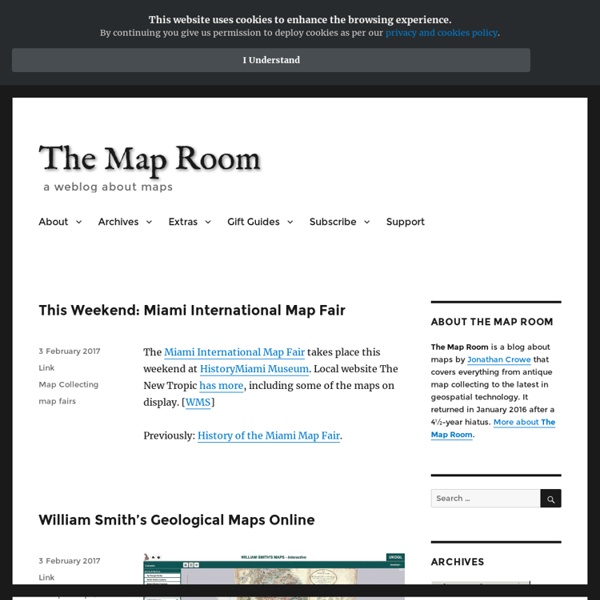



Explore the Grand Canyon With Google Street View Photo: Ariel Zambelich/Wired The Google Maps team went to the Grand Canyon and snapped more than 9,500 images to create a Street View map of the national park. After four months of stitching all those high-resolution pics together, the company’s Street View maps of the Canyon are live and ready to be clicked through. The maps don’t document the entirety of the 277-mile-long Canyon, but they do offer a trip along two of its most popular trails, both of which are on the southern rim: the Bright Angel Trail to the Phantom Ranch campsite and the South Kaibab Trail. There also are some maps along southern rim lookouts and along the Colorado River.
Google Earth Hacks blog The system we have been using for file comment was hand-built years ago, and really it was rather crude. To simplify things, we’ve just implemented the Comment system using the Facebook JavaScript SDK. This system looks nicer, and should be much easier to use. When viewing any file on the site, just scroll down and you’ll see the comment box. Here are a few examples of it on the site. Some test comments, so you can see how they look: Downloads - VirtualBox Here you will find links to VirtualBox binaries and its source code. VirtualBox binaries ¶ By downloading, you agree to the terms and conditions of the respective license. If you're looking for the latest VirtualBox 6.0 packages, see VirtualBox 6.0 builds. Rumsey Historical Map Collection The David Rumsey Map Collection was started over 25 years ago and contains more than 150,000 maps. The collection focuses on rare 18th and 19th century maps of North and South America, although it also has maps of the World, Asia, Africa, Europe, and Oceania. The collection includes atlases, wall maps, globes, school geographies, pocket maps, books of exploration, maritime charts, and a variety of cartographic materials including pocket, wall, children's, and manuscript maps. Items range in date from about 1700 to 1950s. Digitization of the collection began in 1996 and there are now over 55,000 items online, with new additions added regularly. The site is free and open to the public.
what the map can be Free Spatial Data Country level Download country level data for any country in the world: administrative boundaries, roads, railroads, altitude, land cover, population density. Global level A new file with the (2011) global country boundaries the BIG Map Blog - thousands of huge historical maps.
James Fee GIS Blog Google se lance dans le travail collaboratif Zesty Blog nous à fait part tout récemment du lancement d’un tout nouveau service de Google nommé Google Apps. Un véritable outil collaboratif destiné aussi bien aux groupes, aux entreprises, aux établissements scolaires. Mais c’est quoi Google Apps ? Une page d’accueil centralisée,Une boite mail commune,Un client de messagerie instantanée commun,Un agenda de groupe,Des documents partagés (documents et pages web),Un système de notes,Un traitement de texte et un tableur. Bref, tous les outils que l’on se doit de détenir afin de créer un espace de travail collaboratif et si vous ajouter à cela le Google Code (SVN), vous obtenez une suite très puissante d’outils capables de remplacer toutes les applications comme activeCollab, mantis, porte-documents et assembla en tout genre…
OpenStreetMap Google Maps Mania Download free GIS shapefiles Sponsors Page 1 of 4, Go To Next Page Doing GIS doesn't have to be expensive or complicated. If you are new to GIS, check out our free GIS tutorial and atlas. Then download free GIS software and free ArcGIS shapefiles here on these pages. MacBook Pro 15" Unibody Early 2011 Battery Replacement Massachusetts, The people of Massachusetts have always stood up for their right to repair. In 2012, voters passed a law that ensured residents' right to repair their car wherever they wanted.